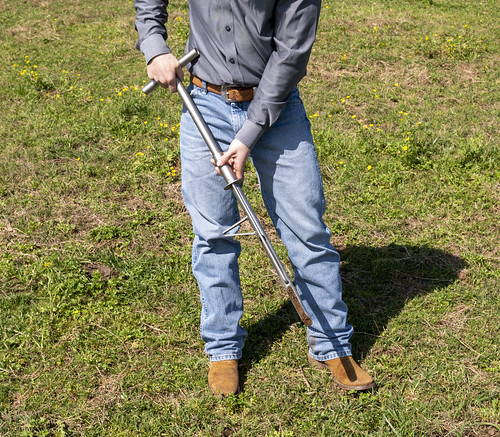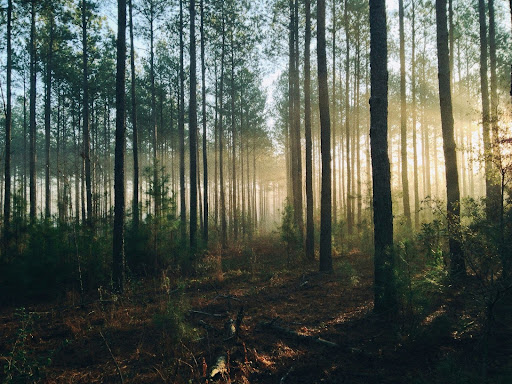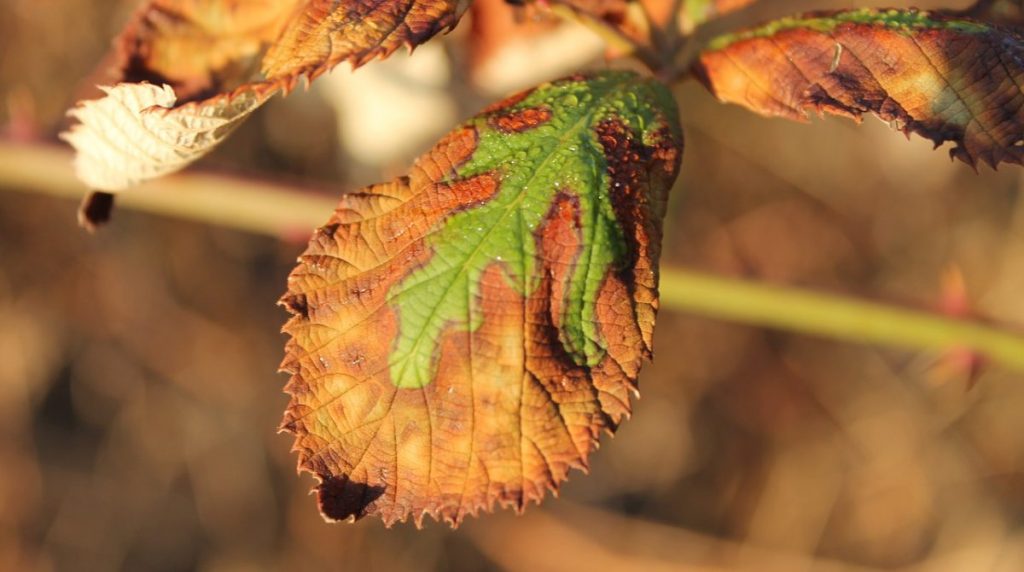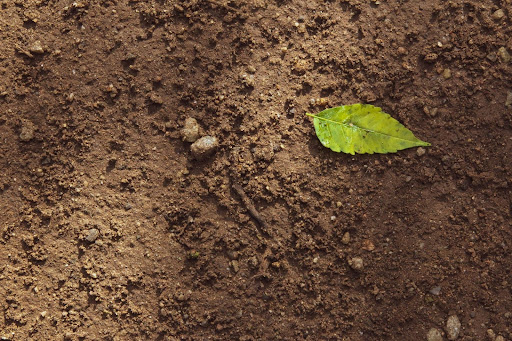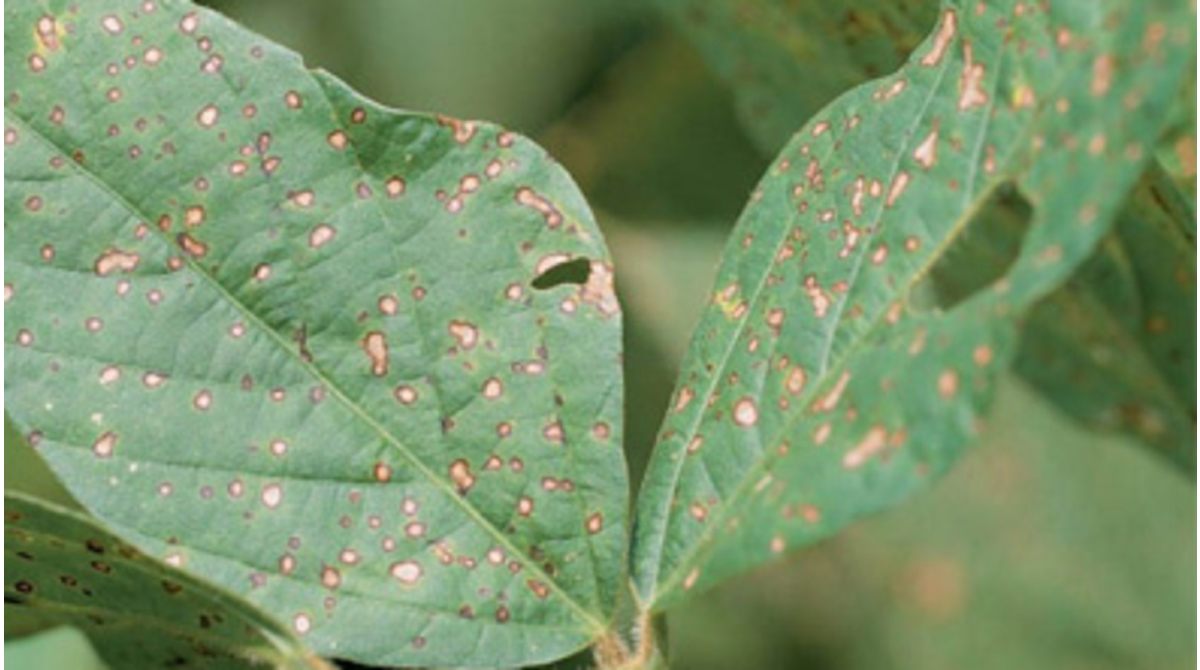
Date October 18, 2022
Category
Magnolia trees are praised for their beautiful, fragrant white blooms contrasted by large, waxy, green leaves. Their conical, towering shape makes them perfect for sunny landscapes, providing much-needed shade during hot Dallas/Fort Worth summers. Unfortunately, North Texas magnolia trees are highly susceptible to algal leaf spot, a deadly tree disease that can irreparably damage our beautiful magnolias if left untreated. In this blog post, we’ll explain what algal leaf spot is, how to identify the symptoms, and how to treat them. Stay tuned to learn more about how to keep your trees healthy and protect them from irreversible damage!
What is Algal Leaf Spot?
Plant parasites aren’t the usual suspect when it comes to organisms that cause North Texas tree diseases. The one species common in the U.S. is Cephaleuros virescens, which causes algal leaf spot or green scurf. This tree disease hosts over 200 plant species but most commonly affects plants with thick, leathery leaves, like hollies, camellias, and magnolia trees. Optimal conditions for algal leaf spot infection are warm, humid weather and poorly aerated soils. Plants weakened by other environmental stress factors are most susceptible and have a higher risk of damage.
How Does Algal Leaf Spot Spread?
Sporangia, asexually-formed reproductive structures, develop on the leaves of the host plant during summer and produce spores that are dispersed by rain, irrigation, and wind. After the initial infection, secondary reproduction spreads over 8-9 months. This tree disease cycle favors warm, wet weather and plants weakened by environmental stressors and poor growing conditions.
Symptoms of Algal Leaf Spot on Magnolia Trees
Algal leaf spot is easiest to identify on leaves, but it can affect twigs, branches, and fruit. Signs of algal leaf spot on magnolia trees include:
- Raised, wavy, cushion-like spots that can appear circular or blotchy.
- Edges of spots may be wavy or feathered.
- Spots vary in color from grayish-green to greenish-brown.
- In the summer, the spots become velvety with reddish-brown hair-like structures on the undersides of leaves due to the presence of reddish, spore-producing structures.
- Numerous colonies can lead to yellowing leaves and premature leaf drop.
If your trees show any of these signs, contact an ISA Certified Arborist at (817) 592-6846 immediately. They can help you determine if your magnolia tree has algal leaf spot and provide you with a comprehensive treatment and prevention plan. Early detection and treatment can prevent long-term damage and gives your tree a better chance of survival.
How Does Algal Leaf Spot Affect Magnolia Trees in North Texas?
Algal leaf spot attacks tree leaves first, impacting their appearance. If left untreated, it can reduce photosynthesis and cause defoliation, twig dieback, and tissue necrosis, leading to the decline and death of magnolia trees in North Texas. The damage to the plant is most significant when the twigs and branches are affected. The parasite enters small cracks or crevices in the bark, thickening the site of infection. Over time, the areas crack as cankers form that will eventually girdle and kill tree branches.
Algal Leaf Spot Treatment
As soon as you notice algal leaf spots on your magnolia trees, contact an ISA Certified Arborist. Early detection is the key to minimizing damage and saving your tree before it’s too late.
Professional pruning can remove infected sites to prevent the disease from spreading to new leaves, twigs, branches, and tissue. Diseased plant matter should be collected and destroyed to prevent it from spreading to nearby trees.
Depending on the severity of the infection, certain pesticides may be necessary. To maximize treatment effectiveness, always trust the experience and skills of an ISA Certified Arborist. Doing so will prevent further harm to your tree and ensure that the tree disease management techniques are correctly applied and appropriately timed.
Algal leaf spot attacks trees weakened by environmental stressors and poor growing conditions, so mitigating these initial causes through routine tree care services and improving soil is an integral part of managing tree diseases.
TreeNewal Tree Disease Management
The key to preventing tree diseases like algal leaf spots is by keeping your trees healthy and strong year-round through routine tree care services. Healthy trees can often resist or manage common North Texas tree diseases and pests on their own, but weak or unmaintained trees are at high risk of irreparable damage.
For the best tree care in Dallas, look no further than TreeNewal. Our team of ISA Certified Arborists and plant health experts understand the various tree diseases and pests affecting our North Texas trees and how to treat them to promote lasting tree health. Our services include tree disease and insect management, tree trimming and pruning, tree nutrition and fertilization, soil conditioning, tree removal, and more. We’re committed to providing industry-leading tree care for North Texas trees and protecting our customer’s investments. Call (817) 592-6846 today to learn more!
TreeNewal is a full-service sustainable tree care company offering residential and commercial tree services in Dallas, Argyle, Denton, Fort Worth, Flower Mound, Southlake, and Westlake. Contact our Dallas tree care specialists at (817) 592-6846 and enjoy tailored tree care advice and the best tree health services in North Texas!
To learn more about Your Guide to North Texas Tree Diseases: Algal Leaf Spot on Magnolia Trees, call our Argyle and Southlake-based teams
at (817) 592-6846 or send us a message.
We’re a little different than the average tree services company.
Learn more about TreeNewal’s ISA Certified Arborists!
Our Dallas/Fort Worth-based tree doctors can explain how sustainable tree care services add more value to your bottom line.
Healthy trees, healthy lives.
